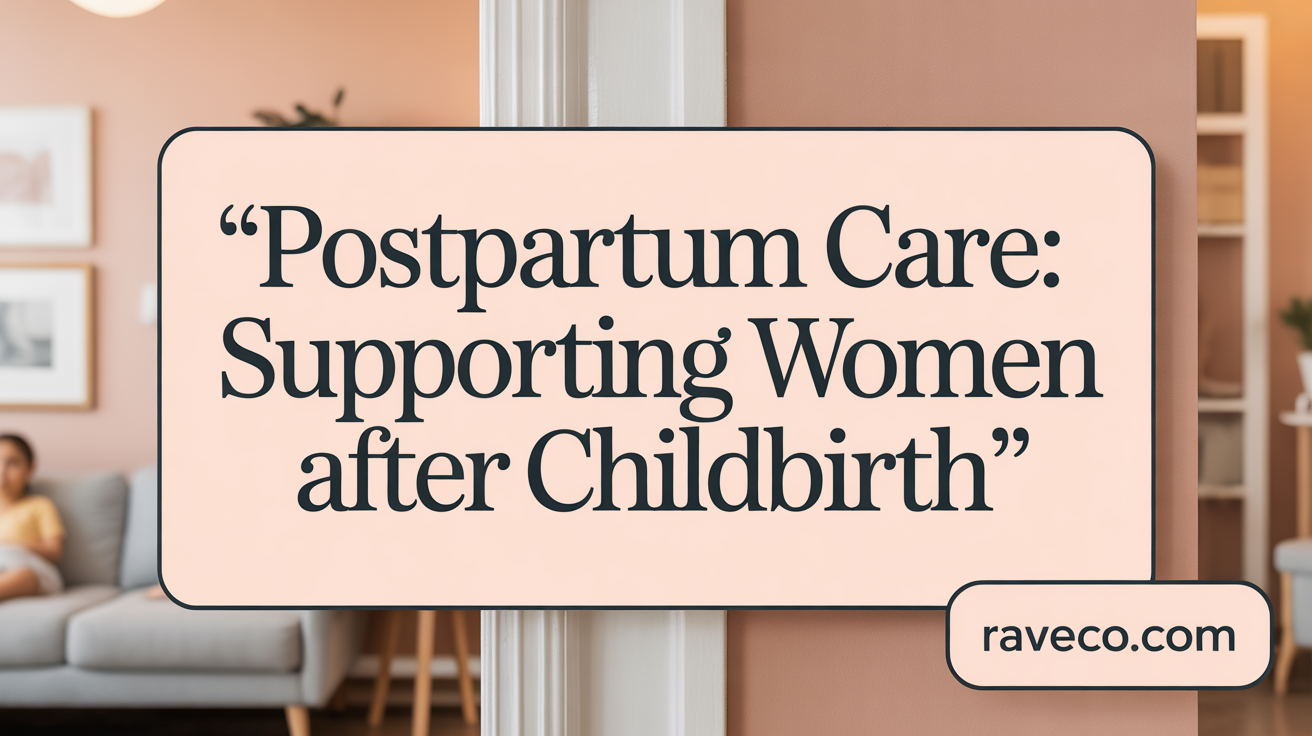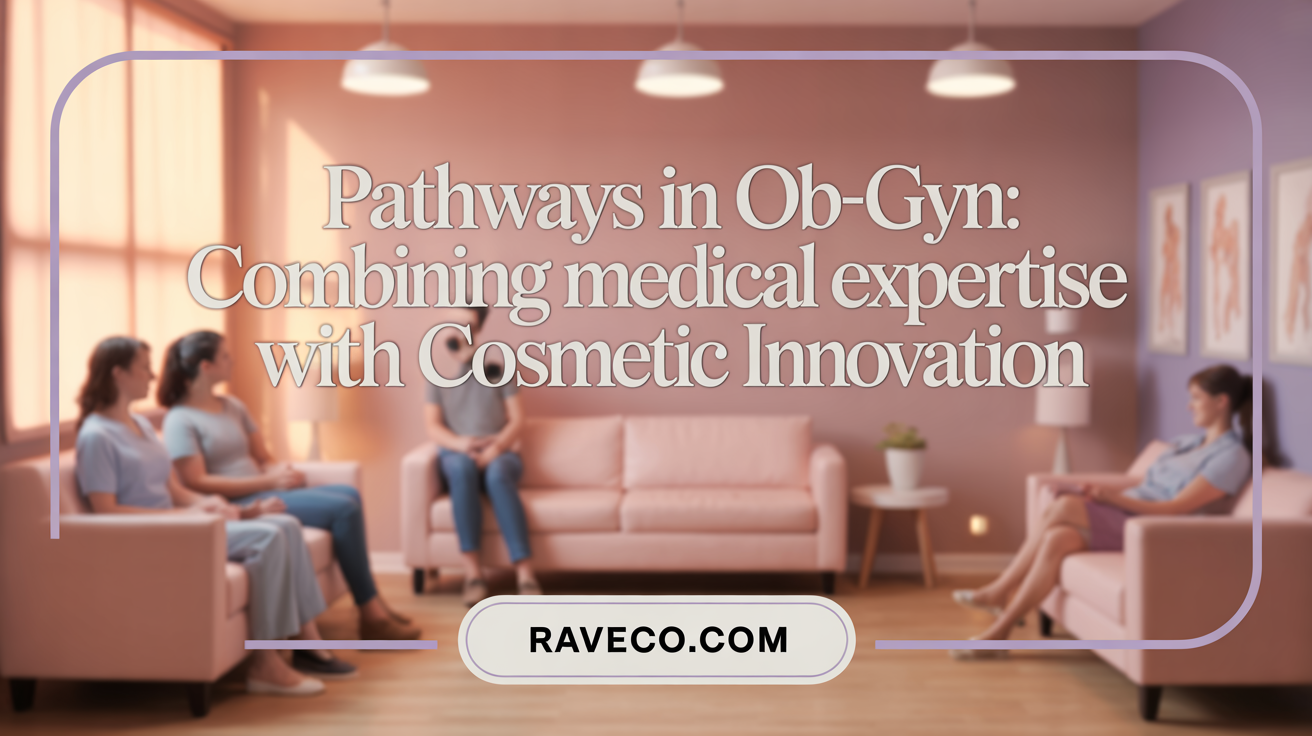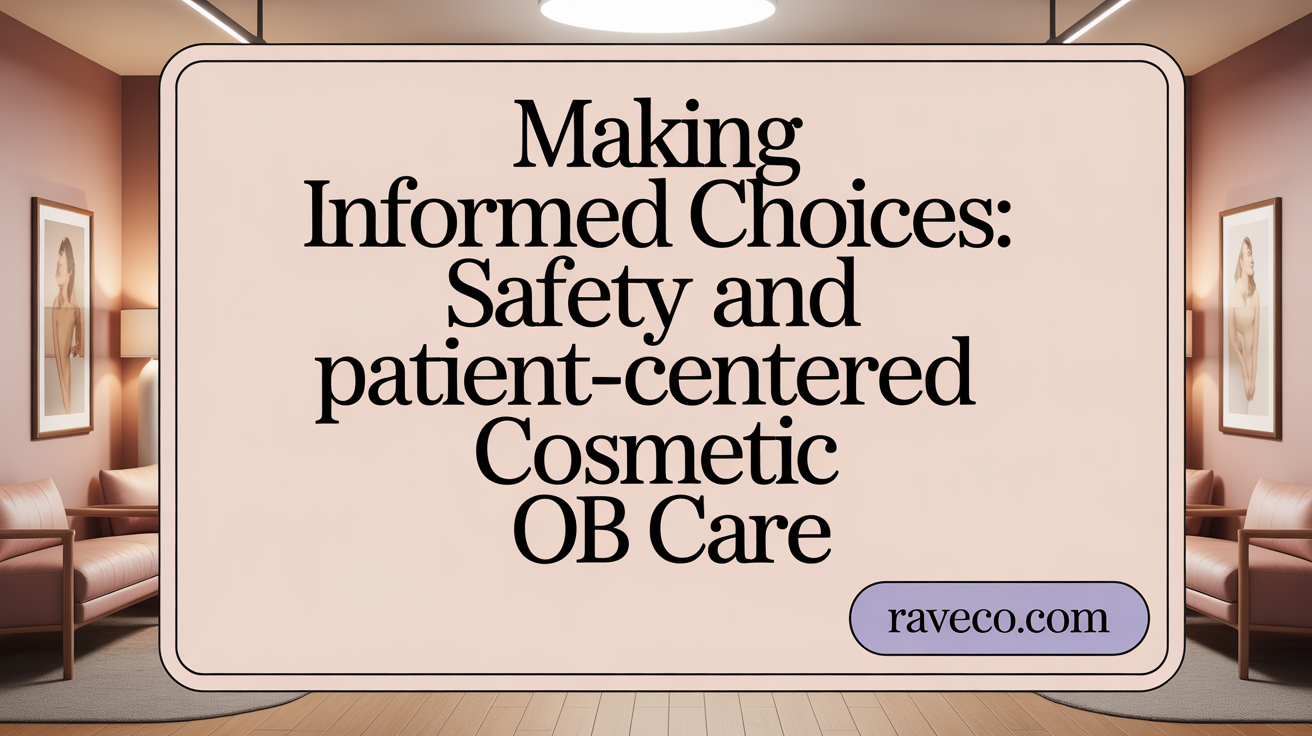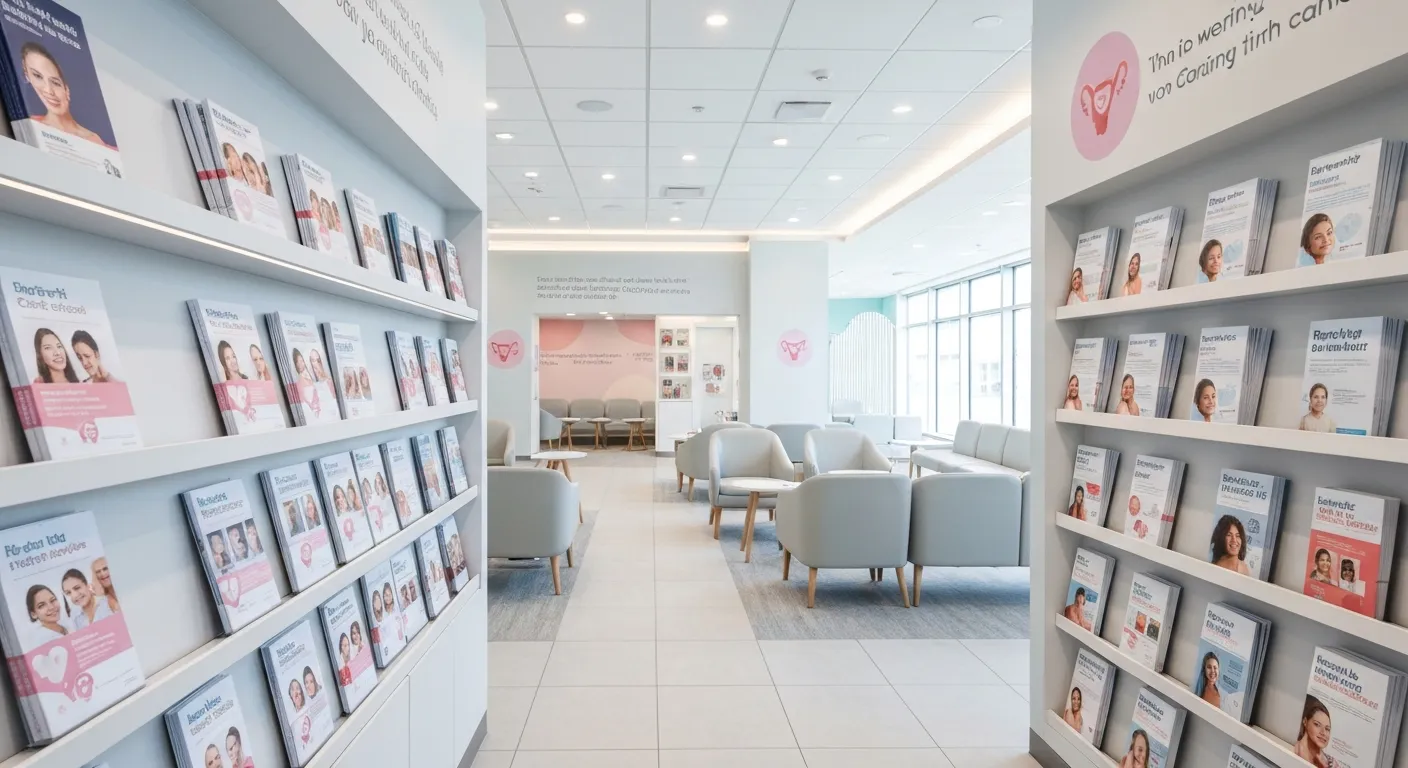Recognizing the Right Time to Address Female Infertility: Key Indicators and Expert Care in Queens

Understanding Obstetric Care Beyond Traditional Boundaries
Obstetric care is conventionally associated with pregnancy, childbirth, and postpartum recovery. However, modern obstetrics extends much further, incorporating cosmetic procedures and comprehensive gynecologic health services that span a woman’s lifetime. This article explores the evolving scope of obstetric and gynecologic care, highlighting aesthetic treatments, holistic approaches, and the continuum of medical services that OB/GYNs provide beyond the delivery room.
The Foundations and Scope of Obstetric Care in Pregnancy

What type of medical care does a pregnant woman receive before delivery?
Before delivery, women undergo routine prenatal care, an essential part of obstetric services. This care involves regular checkups with healthcare professionals like obstetricians, midwives, or nurses. During these visits, providers monitor maternal health with blood pressure checks, urine tests, and ultrasounds, as well as fetal heartbeat assessments. Screening for conditions such as gestational diabetes and infections is standard, along with guidance on nutrition, activity, and vaccinations. As pregnancy advances, visits increase in frequency, especially in the third trimester, to closely observe fetal growth and maternal well-being. This consistent oversight helps detect potential issues early, ensuring healthier pregnancies and safer deliveries.
What is obstetrics and what role does it play during pregnancy?
Obstetrics is a specialized field dedicated to caring for women before, during, and after pregnancy. It includes detailed prenatal monitoring—such as ultrasounds, labs, and fetal assessments—to ensure both mother and baby are healthy. Obstetricians also manage pregnancy-specific conditions like hypertension and diabetes, and perform crucial procedures during labor and delivery, including cesarean sections and fetal interventions. The overall goal is to promote safe, healthy pregnancies, support positive birth experiences, and provide postpartum recovery care. By closely managing complications and offering guidance, obstetrics plays a vital role in optimizing outcomes for mothers and infants.
How does postpartum care fit into the scope of obstetrics and gynecology?
Postpartum care is an integral part of obstetric services, focusing on the health of women after childbirth. It involves monitoring for issues such as bleeding, infections, and emotional well-being, helping new mothers recover physically and adjust socially. Obstetricians typically oversee postpartum recovery, ensuring a smooth transition into motherhood. Additionally, gynecologists may continue to provide care for reproductive health concerns, like menstrual disorders or contraception. The postpartum period emphasizes not only physical recovery but also mental health support, ensuring women’s overall well-being. As part of comprehensive obstetric and gynecologic care, postpartum services promote long-term health and empowerment for women after childbirth.
OB/GYN Training and Career Paths: Integrating Cosmetic and General Obstetric Services

What is the role, training, and career path of an OB/GYN involving both cosmetic and general obstetric services?
Obstetricians and Gynecologists (OB/GYNs) are specialized physicians dedicated to women’s reproductive health. Their training begins with medical school, followed by a rigorous four-year residency program in obstetrics and gynecology. During residency, they gain extensive hands-on experience in managing pregnancy, performing surgeries, and providing primary women’s health care, including Pap smears and STI screening.
Many OB/GYNs choose to further specialize by pursuing fellowships in subspecialties such as maternal-fetal medicine, reproductive endocrinology and infertility, gynecologic oncology, or female pelvic medicine. These advanced training programs typically last three years and prepare physicians for complex cases involving high-risk pregnancies, fertility treatments, or specialized surgical procedures.
Beyond traditional obstetric care, some OB/GYNs expand their scope to include cosmetic procedures that enhance women’s health and appearance. This integration can involve aesthetic treatments like labiaplasty, vaginal rejuvenation, or other minimally invasive aesthetic services, offering comprehensive care tailored to women’s personal and physical well-being.
The career path for an OB/GYN generally involves completing medical school, followed by their residency, and any optional fellowships. Once certified by the American Board of Obstetrics and Gynecology, they may practice as generalists or specialists. Opportunities exist in hospitals, clinics, academic institutions, or private practices, where they deliver prenatal care, manage labor and delivery, and perform surgeries. Their scope may also include preventive women's health services and cosmetic procedures, providing a holistic approach to female health and wellness.
Search terms like “obgyn training cosmetic procedures career” can help prospective physicians explore detailed pathways and specialization options in this dynamic specialty.
Cosmetic and Aesthetic Procedures Offered by Obstetricians and Related Specialists
 In recent years, a variety of cosmetic and aesthetic treatments have become available beyond pregnancy and childbirth, delivered by obstetricians, gynecologists, and related specialists. These procedures address aesthetic concerns and improve vaginal health, enhancing comfort, function, and self-confidence.
In recent years, a variety of cosmetic and aesthetic treatments have become available beyond pregnancy and childbirth, delivered by obstetricians, gynecologists, and related specialists. These procedures address aesthetic concerns and improve vaginal health, enhancing comfort, function, and self-confidence.
For surgical options, procedures like labiaplasty, clitoral hood reduction, and vaginal rejuvenation are popular. These surgeries aim to modify the appearance of the vulva or improve sexual satisfaction. Non-surgical treatments include laser therapies, such as Sciton diVa, which use targeted light energy to improve vaginal tissue health. Radiofrequency devices like TempSure® Vitalia are also employed to tighten tissue and address menopausal symptoms.
Fillers, notably hyaluronic acid injections, are used for labia majora augmentation or G-spot enhancement, providing subtle aesthetic improvements or lifting. These minimally invasive procedures are typically performed in-office and require proper patient counseling.
It is crucial for patients to understand safety considerations when exploring these options. Certain procedures should be avoided during pregnancy due to potential risks. For example, fillers, sclerotherapy, liposuction, and extensive cosmetic surgeries are contraindicated. Superficial chemical peels such as glycolic and lactic acid are generally safe, whereas stronger peels like salicylic acid or TCA should be used with caution or avoided. Laser and light therapies, while promising, lack extensive safety data in pregnant women, and thus should be approached carefully.
Patient counseling should emphasize safety, realistic expectations, and informed consent. Providers must ensure procedures are appropriate for the individual’s health status and pregnancy considerations. Overall, the field of cosmetic obstetrics continues to evolve, offering women options for both aesthetic enhancement and improved quality of life.
| Procedure Type | Examples | Purpose | Safety Notes |
|---|---|---|---|
| Surgical | Labiaplasty, clitoral hood reduction, vaginal rejuvenation | Improve appearance and function | Avoid during pregnancy; consider in non-pregnant women |
| Non-surgical | Laser therapy, radiofrequency, fillers | Address aesthetic, sexual satisfaction, menopausal symptoms | Limited data for pregnant women; caution advised |
| Common safety considerations | Superficial peels, laser treatments, fat transfer | Minimize risks, optimize safety | Strong peels and extensive surgeries generally contraindicated during pregnancy |
Choosing the right procedures requires consultation with experienced specialists to ensure safety and meet individual goals. As therapies expand, ongoing research and patient education remain essential for safe practice.
Comprehensive Care Through a Woman’s Lifecycle: Holistic Gynecologic and Obstetric Services
What services related to gynecologic health and holistic care are provided throughout a woman's lifespan?
Throughout a woman's life, healthcare providers offer a wide range of services designed to maintain reproductive and overall health. These include routine screenings, such as mammograms and Pap smears, to detect breast and cervical cancers early.
Managing menstrual and reproductive health is also central, covering issues like irregular periods, menstrual pain, and fertility concerns. Family planning counseling helps women make informed decisions about contraception and conception.
Well-woman visits serve as comprehensive health reviews, enabling risk assessments and preventive care tailored to the woman's age and personal risk factors. Healthcare teams, including obstetrician-gynecologists and nurse practitioners, provide specialized services such as fertility evaluation, prenatal and maternity care, menopause support, and hormone therapy.
Preventive interventions such as immunizations, screening for sexually transmitted infections, and monitoring blood pressure are integrated into ongoing care routines.
Holistic approaches also incorporate mental health support and culturally sensitive practices, recognizing the importance of emotional well-being. Team-based care involves professionals from various disciplines—mental health specialists, dietitians, and social workers—to address the evolving health needs at each stage of life.
By engaging in these preventive, medical, and holistic services, women can navigate healthier lives through adolescence, reproductive years, menopause, and beyond, ensuring personalized care that respects their unique lifestyles and health goals.
Collaboration and Care Models: Obstetricians, Midwives, and Multidisciplinary Teams

Roles of midwives alongside OB/GYNs
Midwives and obstetricians often work together to provide comprehensive care for women. Midwives mainly care for low-risk pregnancies and offer support during labor and delivery, often focusing on natural, less-interventionist approaches. OB/GYNs handle high-risk pregnancies, perform surgeries like cesarean sections, and manage complex medical conditions.
Collaborative approaches improving maternity and gynecologic care
Many healthcare facilities encourage teamwork between OB/GYNs, midwives, nurses, and specialists. This collaboration ensures that each patient receives personalized and appropriate care based on their unique needs. For example, some hospitals have integrated models where midwives and OBs share responsibilities, enhancing safety and comfort during childbirth.
Patient empowerment and choice in birth and health care planning
A major benefit of these combined care models is patient empowerment. Women can choose between different types of care providers, birth settings, and interventions. They are encouraged to share their preferences and participate actively in planning their maternity care, leading to more satisfying birth experiences.
| Care Provider Type | Typical Focus | Additional Skills | Collaboration Examples |
|---|---|---|---|
| Midwives | Low-risk pregnancy, natural birth support | Birth support, gynecologic care, herbal and holistic options | Co-managing prenatal visits with OBs, joint labor support |
| OB/GYNs | High-risk pregnancies, surgical procedures | Complex medical care, surgeries, fetal monitoring | Shared decision-making during labor, referral systems |
| Multidisciplinary Teams | Comprehensive women's health | Medical, psychological, social support | Coordinated care plans, team huddles for high-risk cases |
This integrated approach ensures women can access diverse services suited to their needs, from routine gynecologic exams to complicated pregnancies, all within a supportive, patient-centered framework.
Innovations in Prenatal and Postpartum Care Enhancing Women's Health

Modernized prenatal care models incorporating telemedicine and personalized monitoring
Recent advances in prenatal care focus on making the experience more accessible, personalized, and efficient. Telemedicine has become a vital component, allowing expectant mothers to attend virtual appointments, discuss concerns, and receive guidance from their providers without frequent trips to the clinic. This approach is especially beneficial for women in remote areas or with mobility challenges. Additionally, personalized monitoring tools, such as self-measurement of blood pressure and weight at home, help track health parameters accurately and conveniently, reducing the need for frequent in-person visits.
These new models align with guidelines from organizations like ACOG, emphasizing tailored care plans based on individual risk factors and social needs. Incorporating technology allows healthcare providers to detect potential issues early, improving outcomes and maternal satisfaction.
Postpartum programs addressing physical and emotional recovery
Postpartum care extends beyond the six-week check-up, with many hospitals now offering comprehensive programs that support physical and emotional recovery. These programs include lactation support, mental health screening, and physical therapy if needed. Women are encouraged to express concerns about postpartum depression or anxiety and access counseling services.
Educational resources often include guidance on infant care, returning to pre-pregnancy activity levels, and managing common postpartum discomforts. Continuous support during this critical period helps promote healthier families and reduces readmission rates.
Technological advances improving access and outcomes for mothers and newborns
The integration of advanced medical technology significantly enhances neonatal and maternal care. Baby-Friendly hospitals promote breastfeeding support with lactation consultants and dedicated spaces, contributing to healthier infant feeding practices.
Specialized facilities like Level III perinatal and NICU units are equipped with state-of-the-art equipment and telehealth support for critically ill newborns. These innovations ensure that high-risk pregnancies and complicated births receive expert, timely intervention.
Furthermore, modern birthing suites feature amenities like large tubs, entertainment systems, and pain relief options, creating a more comfortable environment for labor and delivery. By combining technological advancement with compassionate care, healthcare providers are setting new standards for improving maternal and neonatal outcomes.
Safety and Patient-Centered Decision Making in Cosmetic OB Care

What guidelines are in place regarding procedure safety during and after pregnancy?
While UCI Medical Center emphasizes comprehensive obstetric services, safety is paramount when it comes to cosmetic procedures during pregnancy. Most elective cosmetic treatments—such as Botox, fillers, or laser skin therapies—are generally advised against during pregnancy due to limited safety data. The American College of Obstetricians and Gynecologists (ACOG) recommends postponing non-essential cosmetic procedures until after childbirth to prevent any potential risk to the developing fetus.
In cases where procedures are considered necessary postpartum, strict protocols ensure safety. These include proper timing—preferably after the postpartum period and once the mother's health stabilizes—and consultation with healthcare providers to evaluate individual circumstances.
Why is informed consent and patient education crucial in cosmetic obstetric care?
Informed consent is a core part of patient safety and ethical practice at UCI Medical Center. Women should receive comprehensive education about the risks, benefits, and alternatives to any cosmetic procedure, especially when involving the sensitive period around pregnancy and postpartum.
This process ensures patients make well-informed decisions aligned with their health goals and personal values. Clear communication about the procedure’s impact on health, recovery expectations, and potential complications is essential. Healthcare providers also discuss how pregnancy-related hormonal changes might affect cosmetic outcomes.
How can women balance cosmetic desires with medical considerations in obstetric practice?
Balancing aesthetic goals with medical safety involves a personalized approach. OB providers at UCI work closely with patients to evaluate their needs, consider timing, and prioritize health outcomes.
Women are encouraged to discuss their desires openly during prenatal or postpartum visits. Providers may suggest delaying elective procedures until full recovery, or recommend safer alternatives, such as non-invasive skin treatments. This balanced approach ensures women can achieve their aesthetic goals while maintaining optimal health during and after pregnancy.
The Expanding Landscape of Cosmetic Obstetric Care and Women’s Health
Obstetric care today transcends its traditional focus on pregnancy and childbirth, extending deeply into aesthetic medicine and holistic women’s health across lifespans. Obstetricians and gynecologists, equipped with extensive training and collaborative networks, integrate cosmetic procedures safely with comprehensive reproductive care. With ongoing innovations in prenatal and postpartum practices, and the supportive roles of midwives and multidisciplinary teams, women benefit from personalized, empowered care. As cosmetic and general obstetric services continue to evolve, they promise improved quality of life, self-confidence, and well-being—underscoring the expanding horizons of modern obstetric practice.
References
- Maternity Services | UCI Health | Orange County, CA
- What Is an Obstetrician? - Cleveland Clinic
- OB/GYN or Midwife: Understanding Your Prenatal Care Options
- Midwives: Providing care beyond childbirth - MultiCare Vitals
- Birthing Services - Astera Health
- Tailored Prenatal Care Delivery for Pregnant Individuals - ACOG
- The Stages of Obstetrical Care: What to Expect | WWMG Blog





.png)